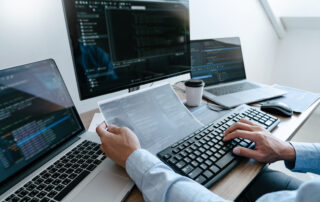As custodians of educational institutions, administrators shoulder the responsibility of maintaining a safe and secure campus environment conducive to learning. One of the primary challenges they face is preventing vandalism and property damage, which not only tarnishes the aesthetics of the campus but also compromises the safety and well-being of students, staff, and visitors. Let’s delve into effective strategies for safeguarding campus assets and mitigating the risk of vandalism and property damage.
- Promoting Awareness and Education:
Educating the school community about the negative consequences of vandalism and property damage is crucial. Develop campaigns, workshops, and educational programs to raise awareness among students about the impact of their actions on the campus environment. Emphasize the importance of respecting school property and encourage students to take pride in their surroundings. - Enhancing Surveillance and Security Measures
Investing in robust surveillance systems and security measures can serve as a deterrent to potential vandals. Install security cameras strategically across the campus to monitor high-risk areas prone to vandalism. Implement access control measures such as fencing, gates, and locks to restrict unauthorized entry into campus facilities during non-operational hours. - Improving Lighting and Visibility
Poorly lit areas on campus often become targets for vandalism and illicit activities due to the reduced risk of detection. Enhance lighting in parking lots, walkways, and secluded areas to improve visibility and deter vandalism. Consider installing motion-activated lights and LED fixtures to illuminate dark areas during the night. - Implementing Landscape Design Strategies
Thoughtful landscape design can contribute to the prevention of vandalism by eliminating hiding spots and enhancing natural surveillance. Trim vegetation and shrubbery to eliminate potential hiding spots for vandals. Incorporate thorny or prickly plants around vulnerable areas to deter trespassing and vandalism. - Establishing a Reporting and Response Protocol
Encourage students, staff, and visitors to report any incidents of vandalism or suspicious activity promptly. Establish a clear protocol for reporting vandalism to school authorities and law enforcement agencies. Implement a swift response mechanism to address reported incidents and initiate necessary repairs or cleanup efforts promptly. - Fostering Community Partnerships
Collaboration with local law enforcement agencies, neighborhood watch groups, and community organizations can strengthen efforts to prevent vandalism and property damage. Engage community stakeholders in proactive initiatives such as neighborhood patrols, graffiti removal programs, and community clean-up events to promote a sense of ownership and pride in the campus environment. - Conducting Regular Maintenance and Inspections
Regular maintenance and inspections of campus facilities can help identify potential vulnerabilities and address them proactively. Schedule routine inspections of buildings, fences, playground equipment, and other infrastructure to detect signs of wear, damage, or deterioration. Promptly repair any damages to prevent further deterioration and discourage future acts of vandalism.
By implementing a comprehensive approach that combines education, surveillance, environmental design, community engagement, and proactive maintenance, school administrators can effectively safeguard campus assets and create a conducive learning environment free from vandalism and property damage. Together, let’s nurture a culture of respect, responsibility, and stewardship to preserve the integrity and beauty of our educational institutions.
For more ways to keep your school safe, contact INSURICA today.
This article is not intended to be exhaustive nor should any discussion or opinions be construed as legal advice. Readers should contact legal counsel or an insurance professional for appropriate advice.
About the Author
Share This Story
Related Blogs
5 Common Cybersecurity Mistakes and How to Avoid Them
All organizations, regardless of their size or industry, are at risk of being targeted by cybercriminals. These malicious actors can conduct cyberattacks, leading to significant financial, operational and reputational damage that can be difficult or impossible to recover from. Fortunately, solid cyber hygiene practices can reduce the likelihood of data breaches and other cyber incidents from occurring, and many of these practices are relatively low-cost and easy to implement.
FERPA and Data Privacy Risks: What Schools Should Know
FERPA and data privacy risks have become increasingly important issues for schools to understand and address. FERPA—the Family Educational Rights and Privacy Act—is a federal law that protects the privacy of student education records. However, as schools collect and store more sensitive data, FERPA and data privacy risks are also evolving. To stay compliant and protect students, school administrators must understand the law, recognize common risks, and implement practical solutions.
Group Health Premiums on the Rise: What Employers Need to Know
In 2025, rising group health premiums are becoming a central concern for employers. Carriers like UnitedHealth, Anthem, and CVS Health have issued projections showing significant cost increases—driven by escalating claims severity, specialty drug costs, and continued labor shortages across provider networks.







